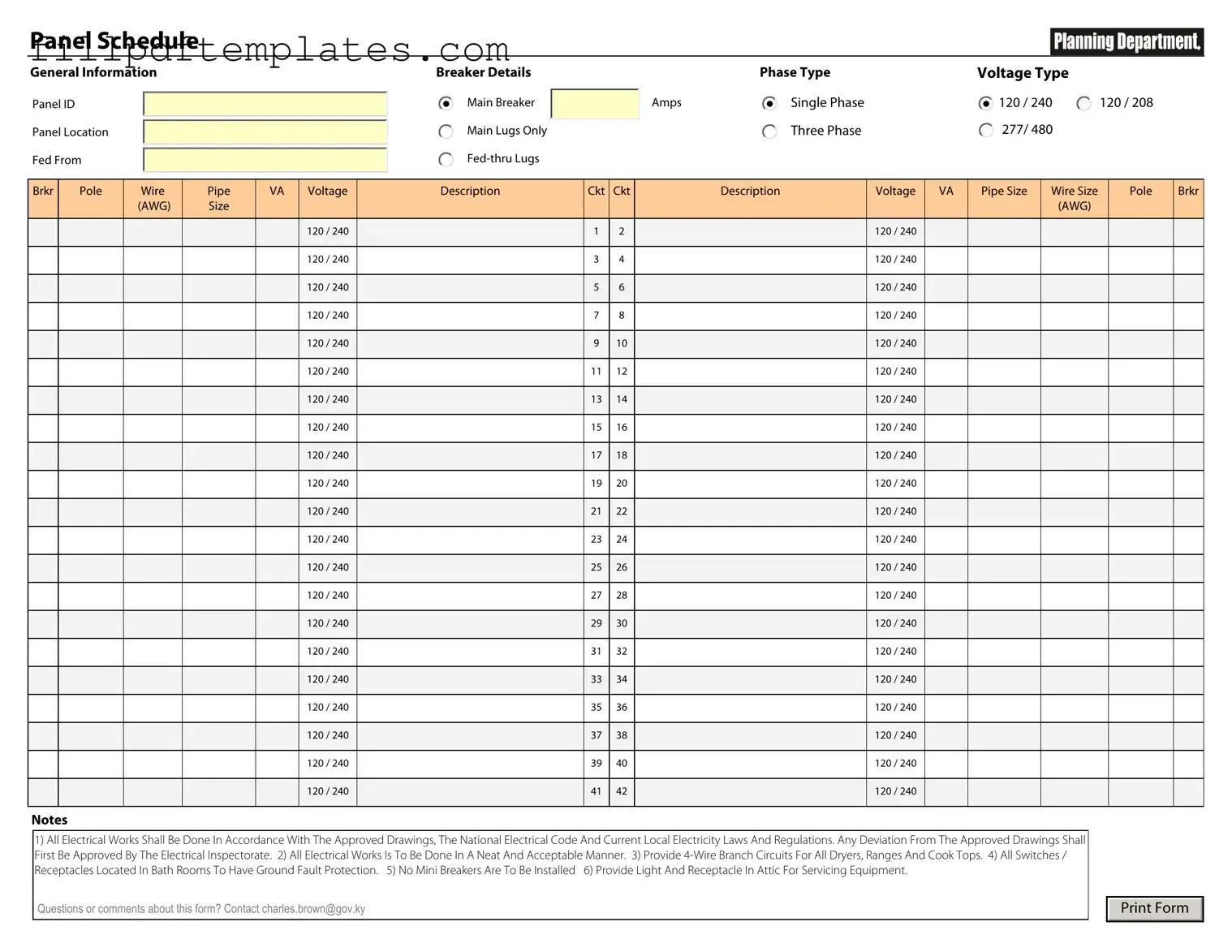Fill a Valid Electrical Panel Schedule Template
The Electrical Panel Schedule form is a crucial document used in electrical installations to outline the distribution of electrical circuits within a building. This form provides essential information regarding circuit loads, breaker sizes, and panel configurations, ensuring safety and compliance with electrical codes. For a smooth and efficient process, consider filling out the form by clicking the button below.
Get Form

